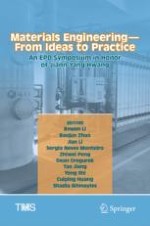2021 | Buch
Materials Engineering—From Ideas to Practice: An EPD Symposium in Honor of Jiann-Yang Hwang
herausgegeben von: Dr. Bowen Li, Prof. Baojun Zhao, Dr. Jian Li, Prof. Sergio Neves Monteiro, Dr. Zhiwei Peng, Dr. Dean Gregurek, Tao Jiang, Yong Shi, Cuiping Huang, Dr. Shadia Ikhmayies
Verlag: Springer International Publishing
Buchreihe : The Minerals, Metals & Materials Series
